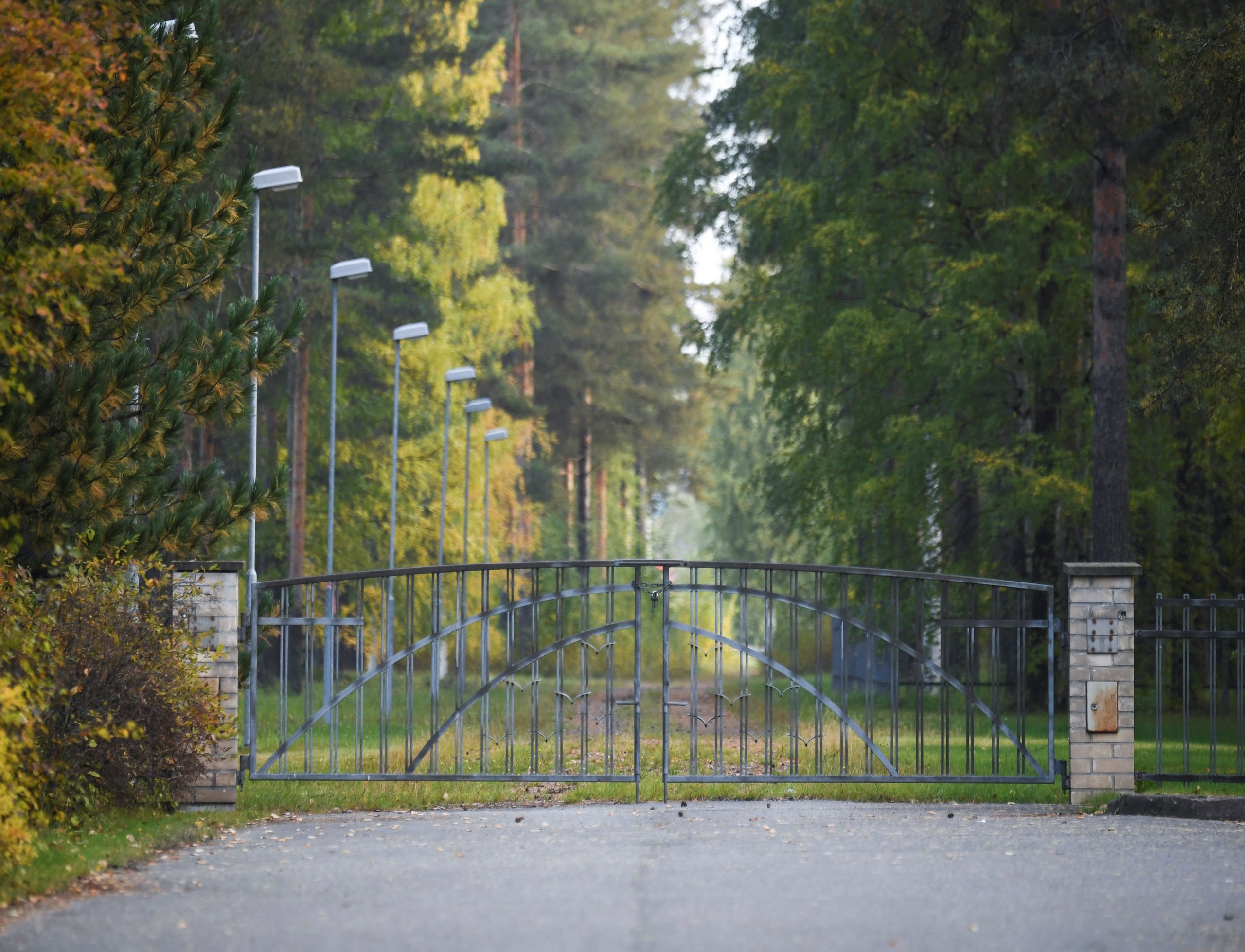Transnational Death: Project Update
Project Update: Transnational death: practices of death and remembrance in the transnational everyday on the Finnish-Russian border (TraDeBo)
“The death is getting nearer day by day” – Paraphrase of the song by Boris Grebenshtshikov The Sky is getting nearer

Death in everyday transnational reality. Photo by Kimmo Brandt
Following the massive scale invasion of Russian troops on Ukraine on February 24, a wave of death, destruction and displacement swept through Ukraine. The numbers of people who escaped from their homes or died are rising dramatically daily, and in all spheres of life this reflects also to outside Ukraine, including Finland and Russia. Like so many other work communities, our research project Transnational Death has recently had a reflective discussion on how to continue working with the ongoing devastation in Ukraine.
In addition to experiencing the horrific events in Ukraine through media and emotions, several members of our research group have friends and acquaintances who have been forced to flee Ukraine. There is now a terrifying displacement of peoples changing the transnationality of societies greatly. The total number of refugees so far is uncertain, but it could already be close to five million. So far, approximately 10 000 Ukrainians have arrived in Finland. Where do they stay? How dispersed around Finland are they? How many plan to go back? Simultaneously, the Kremlin has tightened its totalitarian grip on Russia and many are leaving the country, most notably to visa-free countries Armenia, Georgia and Turkey.
Our project has a two-fold scope: it is thought to explore, how death is lived through in a transnational everyday reality of Russian-speaking immigrants in Finland, and to analyze how death is present in memory and identity politics of neighboring/bordering countries. How the war has affected the transnationality between Finland and Russia, and how death is present in these changes? In the recent conversation of the members of our project, the several changes in the intersection of death, everyday and transnationality were identified.
Death in the everyday and mediatized transnationality
In principle, the war is being broadcasted live: it is being videotaped on smartphones, by drones, satellites, and additionally by numerous journalists. Images of death in Ukraine travel across borders in traditional and social media. Consequently, we ask whether the mediatized death is becoming more banal, and part of the everyday? One can see it from the screen of a smartphone everywhere and anytime. This happens simultaneously with the tightening of access to media sources in and out of Russia with the pretext of protecting the “truth” and preventing “fakes”.
It is obvious, that in Finland and in Russia “traditional” / “heritage” media represent war-related deaths in different ways. Russian mediascapes have changed dramatically; under the pressure of the Russian state, almost all more or less independent media have ceased in Russia, international social media platforms such as Facebook and Instagram are blocked, and lots of independent journalists have started their own broadcasting using e.g. Youtube that still functions in Russia.
The representations of the war and war-related deaths in Ukraine are polarized in Russian state-controlled media and in scattered media produced by scattered independent actors. Russian official media represents deaths in the Donbas “people’s republics” as important and meaningful, worthy of revenge; and the deaths of civilians in other parts of Ukraine as accidental, insignificant, or staged. The deaths of Russian soldiers are presented as heroic. Overall, compared to previous Russian wars, the death count presented in the media is lower, although according to independent and Western sources the casualties are significantly higher. The power of death in evoking emotional reactions is seemingly recognized by those who control its images, and its representations are strongly regulated.
In Finnish mainstream media, including social media platforms, Russia’s image is that of an aggressor, and Ukraine and its citizens are victims of Russian aggression. The images of cruel war and unnecessary suffering and deaths of civilians have been omnipresent in all news programs on TV and in printed media. In Finnish media, the war is portrayed as insane and vicious, caused by the Russian president Putin and his circle. In the viewers and readers, the deaths of civilians raise rage and protest against Russia as an aggressor.
Russian speakers are affected by both, Finnish and Russian mediascapes. Their views have become even more polarized than before. The investigation of how they see and evaluate deaths in this war may uncover important processes in the formation of opinions and identities within the Russian-speaking population of Finland, and their connections with Russian mediascapes.
Additionally, the official linkages between Finland and Russia have been cut by the European sanctions against Russia. How do those who have transnational families continue to keep up these relations, and how death is affecting them? The lived everyday life contains ambivalent feelings and emotions. In addition to the worries about maintaining transnational family relations, there are new concerns about dealing with everyday matters. “How are the sanctions affecting my elderly relatives in Russia? Will they get pension and the medication they need, and what happens when prices of everyday items will increase?” Those are the questions concerning the minds of people living under the transnational conditions. The war in Ukraine has further weakened the sense of predictability and trust, and overall everyday security among Russian- and Finnish-speaking dwellers of Finland. Many fears have emerged, and emotions and affects of death have become part of our everyday.
One of the most concrete consequences of Russian aggression in Ukraine is the appearance of Ukrainian refugees in Finland. What are their experiences and feelings? And how will this influence the profile of Russian-speakers in Finland? And who can be called a Russian speaker? Do we need to re-define the concept of Russian speakers? Can we define language as a maker of identity of any kind in this context anymore? Is it politically and emotionally correct to talk about Russian speakers which, in its classical meaning, somehow defines the Post-Soviet people; how sensitive is this word in current circumstances? Obviously, the Russian language as well as the Russian culture have become very loaded concepts, and in the Russian-speaking blogosphere it is a largely discussed topic.
There has also been some discussion about the equality concerning the distribution of help for the Ukrainian war refugees in comparison to those from the Middle East and Africa. There are several factors in this equation: timing, proximity, practical administrative conditions, the shared question of open NATO membership for Finland and Ukraine, the gendered images of refugees, and also their ethnicity. Moreover, the mainstream Finnish war memory may resonate more with one country (particularly Russia) invading another in comparison to the originally internally inflated wars in Libya and Syria for example. In addition, in the current scale, the war in Ukraine and Ukrainian refugees are a new phenomenon. Previously, there has been indications that people tend to grow less sensitive to news about war casualties in the longer run. Is the hierarchy of deaths following ethnic hierarchies?
Identities, memories, and languages
Russia’s war in Ukraine has evoked numerous analogies with different periods of the past. While official Russia presents this war as a “liberation from Fascism and Nazism”, thus constructing continuity with the official memory of the great patriotic war, in Finland and beyond the war in Ukraine sometimes is compared to Finland’s winter war of 1939-1940.
Obviously, in the official Russian identity politics, the war in Ukraine will be further justified by the references to the role of the Soviet Union as a liberator from Fascism. But the omnipresent images of deaths of victims of this war will inevitably de-center official Russian identity politics. The meaning of the Great Patriotic War (and the war in general) as the basis of the Russian identity, at least abroad, will change drastically. If it was thought that the war and the victory in the Great Patriotic War used to be about positive discussion points, now it has become extremely problematic as an opener of discussions about Russian identities outside Russia. It remains to be seen what happens with the organization of the Immortal Regiment March this May both in Russia and abroad. There are statements in public media where “death” is used as a metaphor for the impact of the war on Russian identity.
In the more liberal segment of the Russian mediascape, the issues of collective guilt and collective responsibility have been widely discussed. It can be said that continuities are built from the traumatic past to the traumatic presence – is Russia becoming a new Germany? While there is no objective information on how Russians evaluate the invasion, in and out of Russia many have voiced their complicity in unnecessary deaths, collective guilt, and blame from non-Russians. Some feel that “We are responsible for what Russians are doing in Ukraine”. From the perspective of memory politics and discussions, now we are at a point of bifurcation, and studies on the “coming to terms” with feelings of guilt, complicity and responsibility are informative for us.
The beginning of the war was experienced and verbalized as a shock which still lasts. The discussions about the war convey this mixed emotional condition. The feelings of anger, fear, indignation, frustration, grief, distress, etc. were expressed with foul language, the language of hatred. Once again, the war has broken the boundaries of accepted ways of expression. On the other hand, the language has been used to depersonalize death. For example, the expression “Cargo 200” (the reference to trucks transporting casualties from wars starting from Afghanistan) – is in use again meaning a flow of bodies of soldiers from Ukraine to Russia. Many of them are also returning to the Republic of Karelia where there is a new aesthetic of our heroes in everyday life. In the streets of Russian cities and villages, the symbols of Russian aggression – the new Russianness – have become visible in producing the image of different actors’ or people’s support for the “war against Nazism”.
It seems that the language of participants of this conflict – and we all are involved in it – has become extremely emotional, and partly lost its explanatory power. Both pro- and anti-Ukrainian actors use the same words in naming each other, such as Nazis, Fascists, genocide, hostages, junta, propaganda, fakes, cyberwar etc. The former categories of analysis have become categories of practice. The abundance of this language of war and war crimes forces us to be attentive to its use and, at the same time, makes us develop other ways of talking about war and war deaths.
Methodology and language
The reactions to the war among research communities have been different. While for many researchers who work on Russia, this situation seems like “the loss of the object of the study”, for us, it would seem that we have unexpectedly gained potential data. We have discussed this situation from opposite positions: on one hand, it seems that we have to document our and people’s feelings, conditions, wordings, and thoughts. While, on the other hand, we have to be sensitive to ethical issues in research. Now we all are in a new vulnerable situation. In any case, human dignity, and especially the dignity of casualties of the war, is a leading principle of our group.
Click here to read related posts
